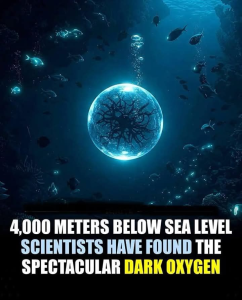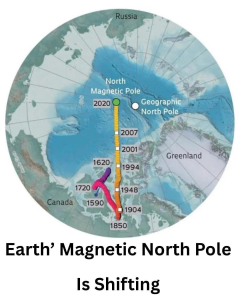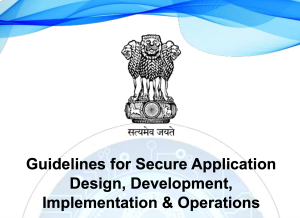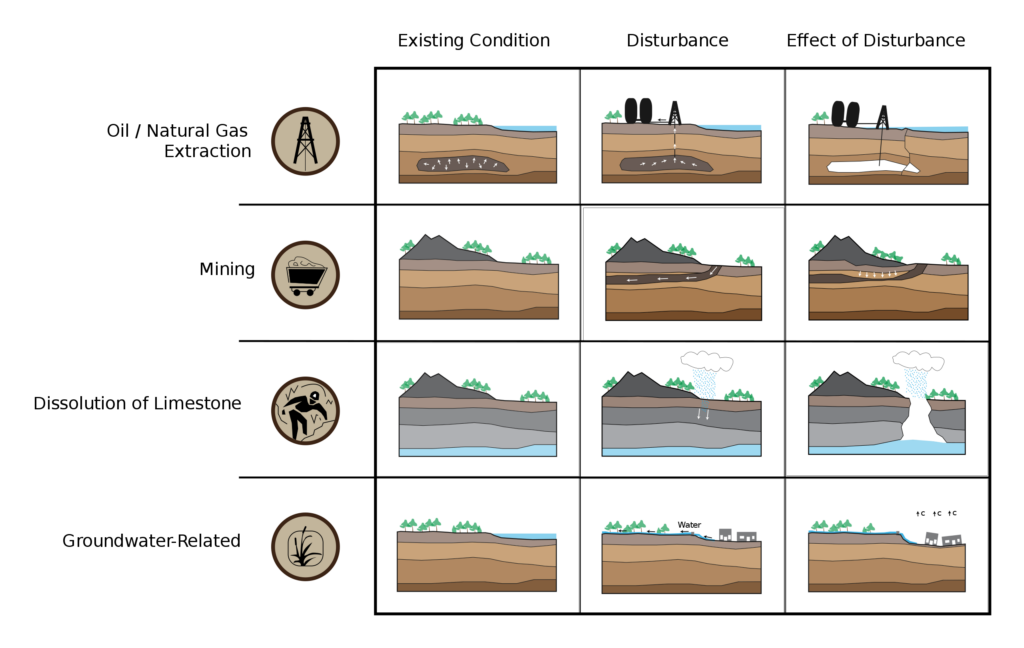
Subsidence is the downward vertical movement of the Earth’s surface. It can be caused by both natural processes and human activities. Subsidence involves little or no horizontal movement, which distinguishes it from slope movement.
There are many different causes of subsidence, including:
- Groundwater extraction: When groundwater is removed from the ground, the weight of the water is no longer supporting the ground above it. This can cause the ground to sink.
- Mining: When minerals are mined from the ground, the weight of the removed material is no longer supporting the ground above it. This can cause the ground to sink.
- Oil and gas extraction: When oil and gas are extracted from the ground, the weight of the removed material is no longer supporting the ground above it. This can cause the ground to sink.
- Soil compaction: When soil is compacted, it becomes less able to support the weight of structures above it. This can cause the ground to sink.
- Erosion: When soil is eroded, it is no longer there to support the weight of structures above it. This can cause the ground to sink.
- Earthquakes: Earthquakes can cause the ground to sink, either directly or indirectly.
- Sinkholes: Sinkholes are formed when the ground beneath the surface collapses. This can be caused by a variety of factors, including groundwater extraction, soil compaction, and erosion.
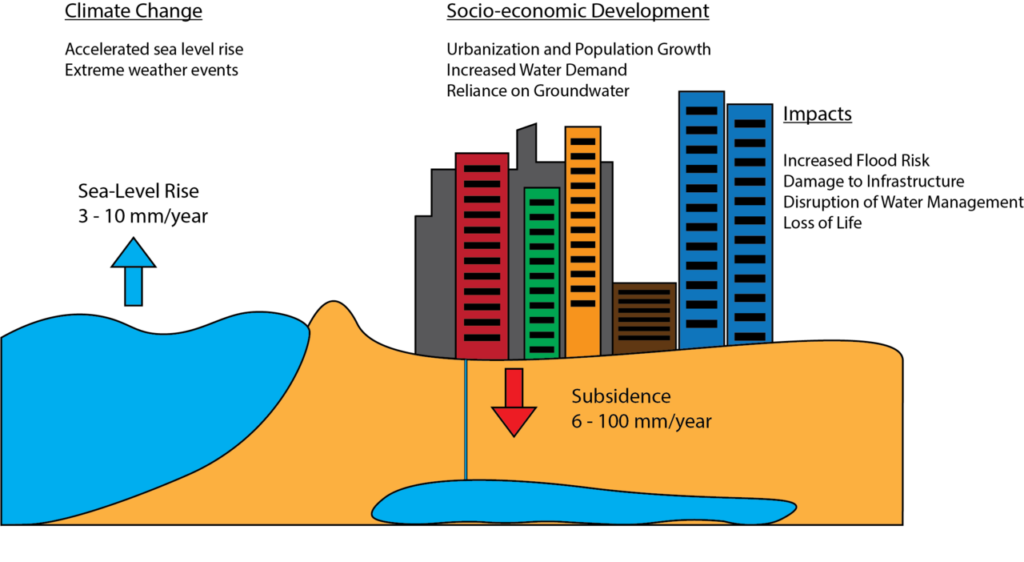
Subsidence can have a number of negative impacts, including:
- Damage to infrastructure: Subsidence can damage roads, bridges, buildings, and other infrastructure.
- Flood risk: Subsidence can increase the risk of flooding, as it can lower the ground level and make it more susceptible to flooding.
- Environmental damage: Subsidence can damage ecosystems and habitats.
- Economic losses: Subsidence can lead to economic losses, as it can damage infrastructure and make it more expensive to develop land.
There are a number of things that can be done to mitigate the effects of subsidence, including:
- Reducing groundwater extraction: Reducing the amount of groundwater that is extracted from the ground can help to reduce the amount of subsidence.
- Reducing soil compaction: Compacted soil can be loosened by adding organic matter or by using other methods.
- Reducing erosion: Erosion can be reduced by planting trees and other vegetation, and by using other methods.
- Building structures on strong foundations: Structures that are built on strong foundations are less likely to be damaged by subsidence.
- Monitoring subsidence: Subsidence can be monitored by using a variety of methods, such as surveying and using ground-penetrating radar. This can help to identify areas that are at risk of subsidence and to take steps to mitigate the effects.
Subsidence is a serious problem that can have a number of negative impacts. There are a number of things that can be done to mitigate the effects of subsidence, but it is important to be aware of the risks and to take steps to protect property and infrastructure.
Subsidence refers to the sinking or settling of the Earth’s surface, typically caused by the extraction of underground resources, natural geological processes, or human activities. It can occur due to the collapse of underground cavities, the compaction of sediments, or the withdrawal of fluids from underground reservoirs.
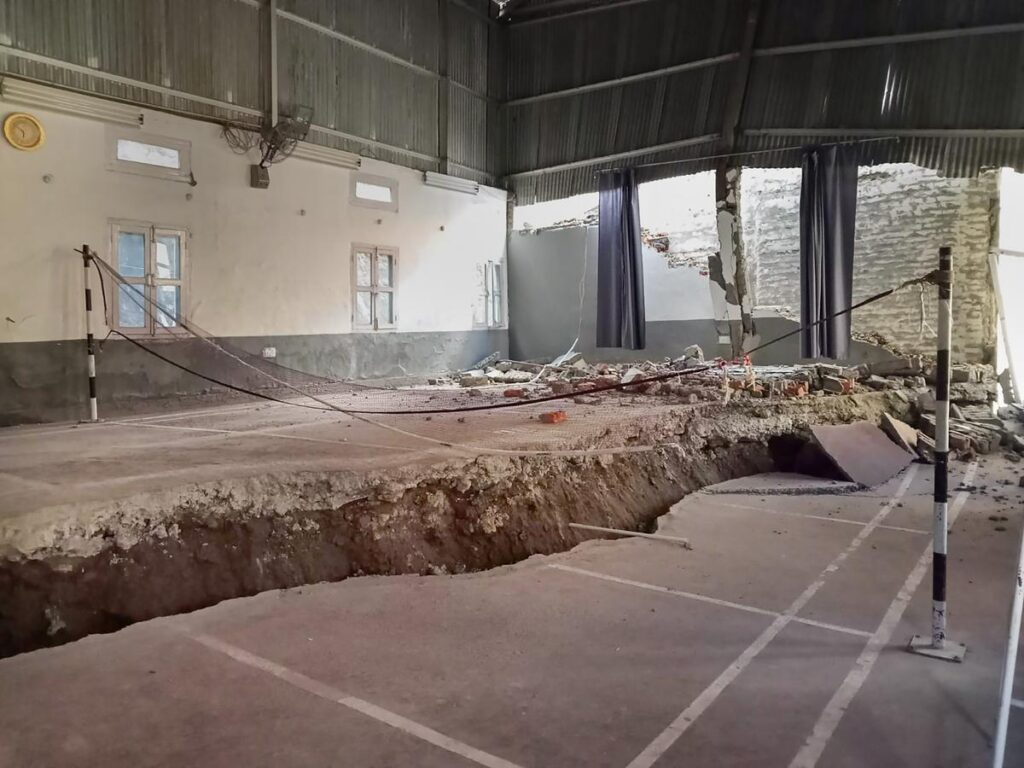
Joshimath, a town located in the Indian state of Uttarakhand, has been affected by subsidence primarily due to human activities related to the construction and operation of infrastructure projects. The region is situated in a geologically active area, prone to landslides and seismic activity. However, the specific subsidence issues in Joshimath are primarily associated with the construction and operation of hydroelectric power projects and tunneling activities.
Hydroelectric power projects involve diverting and channeling water for electricity generation, which often requires the construction of dams, tunnels, and reservoirs. These activities can lead to the extraction of groundwater and the weakening of the subsurface structure, causing the ground to sink or settle. Similarly, tunneling activities involve excavating underground passages, which can disturb the stability of the surrounding rock and soil layers, leading to subsidence.

The subsidence in Joshimath has caused concerns regarding the structural integrity of buildings and infrastructure in the area. It poses risks to the safety of the local population and can result in damage to roads, bridges, and other critical facilities. Efforts are made to monitor and mitigate the subsidence through geotechnical studies, engineering measures, and proper management of the construction activities.
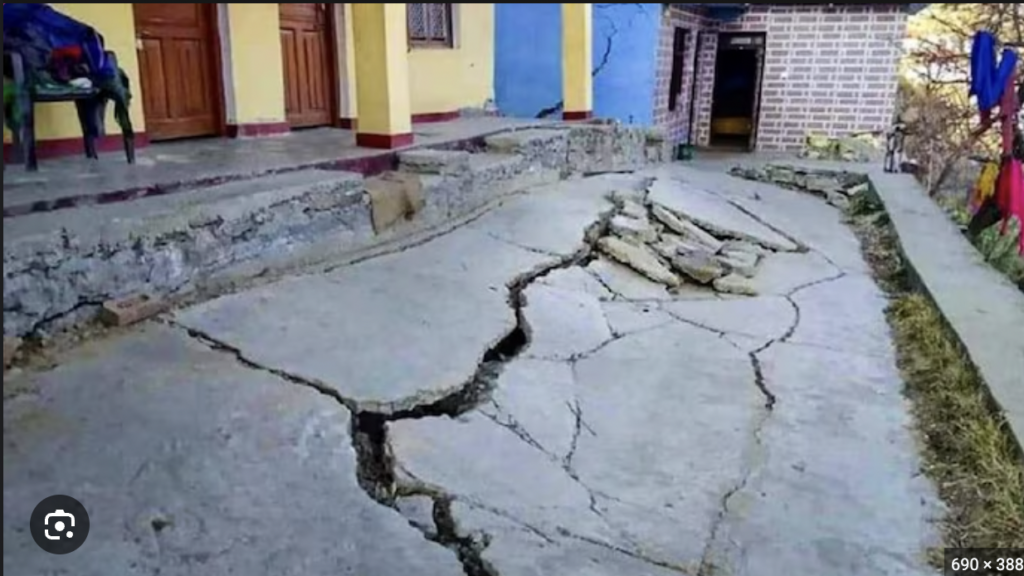
It’s worth noting that this information is accurate up to my knowledge cutoff in September 2021, and there may have been further developments or studies on subsidence in Joshimath since then.

